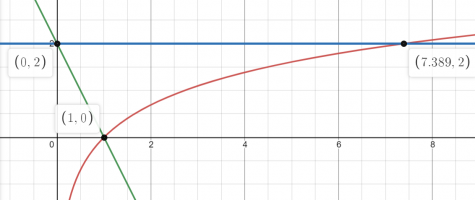I stumbled upon this problem in my review and I got stumped.
The given curves/lines are: y = lnx, y = 2, y = -2x + 2. The points of intersection are (e^2, 2), (0, 2), and (1, 0).
The questions go like, "Set up an integral using washers if the solid is rotated about the y-axis," and "Set up an integral using shells if the solid is rotated about y = 3."
So, my first approach is to express the equations in terms of x but the y = 2 line confused me since I don't know how to express it as x. So, how do I go about setting up the integrals? I would know how to do it if the line was x = 2 but it was y = 2.
The given curves/lines are: y = lnx, y = 2, y = -2x + 2. The points of intersection are (e^2, 2), (0, 2), and (1, 0).
The questions go like, "Set up an integral using washers if the solid is rotated about the y-axis," and "Set up an integral using shells if the solid is rotated about y = 3."
So, my first approach is to express the equations in terms of x but the y = 2 line confused me since I don't know how to express it as x. So, how do I go about setting up the integrals? I would know how to do it if the line was x = 2 but it was y = 2.


